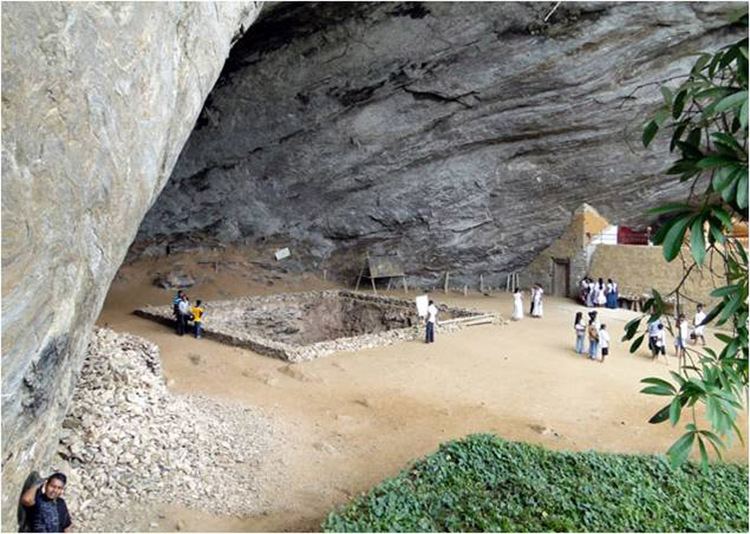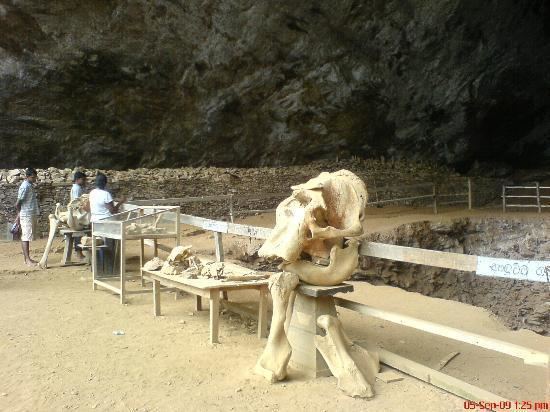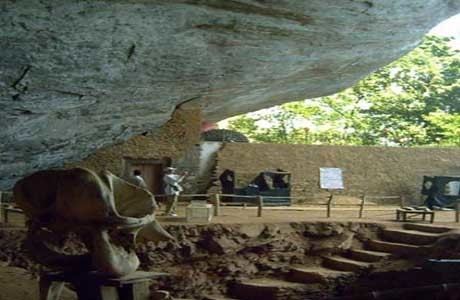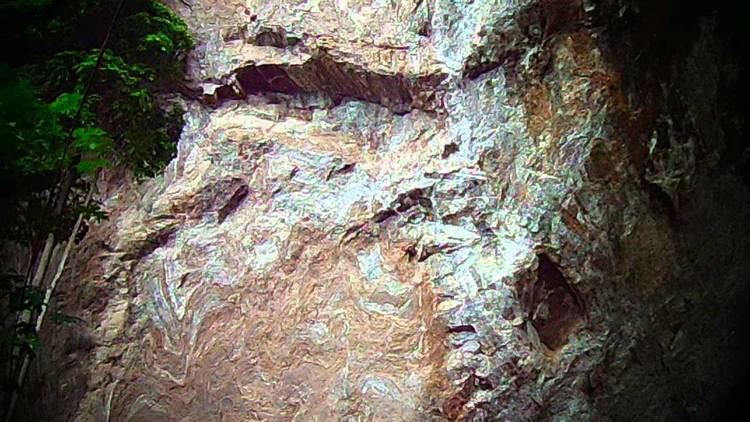Alternate name Pahiyangala Cave | ||
 | ||
Tour to fa hien cave pahiyangala bike ride
Fa Hien Cave, also Pahiyangala Cave is situated in the district of Kalutara, Western Province, Sri Lanka and according to a rural legend, named after an alleged resident during historical times, namely Buddhist monk Faxian (also Fa-Hien, or Fa Hsien). However, there is no archaeological or historical evidence to support this legend. Nonetheless, the site is of archaeological significance as Late Pleistocene human fossilized skeletal remains were discovered un the cave's sediments during excavations in the 1960s, the 1980s and in 2013.
Contents
- Tour to fa hien cave pahiyangala bike ride
- Sri lanka telecom pura varuna fa hien cave
- Prehistoric human remains
- References
Sri lanka telecom pura varuna fa hien cave
Prehistoric human remains

In 1968 human burials sites were uncovered inside the cave by Siran Upendra Deraniyagala of the Sri Lankan Government Department of Archaeology, who undertook a second excavation campaign with assistant W. H. Wijepala in 1988. The finds mainly consisted of microlith stone tools, remnants of prehistoric fire places and organic material, such as floral and human remains. Radiocarbon dating indicates that the cave had been occupied from about 33,000 years ago, the Late Pleistocene and Mesolithic to 4,750 years ago, the Neolithic in the Middle Holocene. Human remains of the several sediment deposits were analyzed at Cornell University and studied by Kenneth A. R. Kennedy and graduate student Joanne L. Zahorsky.

The oldest fragments of human bone fossils are attributed to three children, a juvenile and two adults that show evidence of secondary burials. The bodies had been exposed to decomposition and scavengers and the bones were subsequently placed in graves. Additional fossil remains include those of another young child, dated to about 6,850 years BP and of a young woman (nicknamed Kalu-Menika by archaeologists), dated to about 5,400 years BP. Both individuals were also recovered from secondary burials.

The discoveries allowed archaeological and paleontological comparative studies as the earliest occupants of Fa Hien, or Pahiyangala Cave lived during the same period as European Cro-Magnon man and other Late Pleistocene hominids in the Eastern Hemisphere. Studies of teeth found in the cave indicate that the prehistoric population of Sri Lanka processed food by grinding nuts, seeds and grains in stone querns and that they continued to maintain a hunter-gatherer lifestyle until about the 8th century BCE. Sri Lanka has yielded the earliest known microliths, which didn't appear in Europe until the Early Holocene.

Other important Sri Lankan prehistoric sites at which human remains have been found include two other caves – Batadombalena (about 28,500 years old) and Belilena Kitulgala (about 12,000 years old) – and an open-air site, Bellanbandi Palassa (about 6,000 years old).

